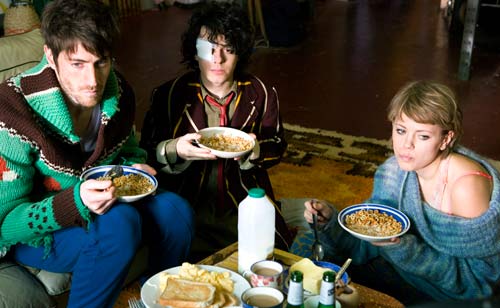
I've posted a final scorecard for this year's Sundance film festival over at Paste. I have a few more capsules to wrap-up the coverage, and then I'll be back here at Daily Plastic with a backlog of goodies. Just you wait.
The venerable and exceedingly intermittent Plastic Podcast, which has outlived the two blogs with which it was intertwined, and whose audio archives were difficult to ...
An audio program about movies. Listen with your iPod or computer.

The venerable and exceedingly intermittent Plastic Podcast, which has outlived the two blogs with which it was intertwined, and whose audio archives were difficult to ...
Daily Plastic is a Chicago-based movie blog, a collaboration between Robert Davis and J. Robert Parks, the same pair who brought you the wearable movie tote, the razor-thin pencil pocket, and that joke about aardvarks. If you know the whereabouts of the blue Pontiac Tempest that was towed from the Plastic Parking Lot on the evening of August 7th, 2008, or more importantly if you've recovered the red shoebox that was in its trunk, please contact us at your earliest convenience.
Davis was the chief film critic for the late, great Paste Magazine (which lives on now as a website) from 2005 through 2009, and he counts this interview with Claire Denis among his favorite moments. Every once in a while he pops up on Twitter. He's presently sipping puerh in Chicago, even at this hour. Meanwhile, Parks, whose work has appeared in TimeOut Chicago, The Hyde Park Herald, and Paste, is molding unsuspecting, college-aged minds in the aforementioned windy city. Media types are warned to stay clear of his semester-sized field of influence because of the distorting effects that are likely to develop.
The © copyright of all content on Daily Plastic belongs to the respective authors.

I've posted a final scorecard for this year's Sundance film festival over at Paste. I have a few more capsules to wrap-up the coverage, and then I'll be back here at Daily Plastic with a backlog of goodies. Just you wait.
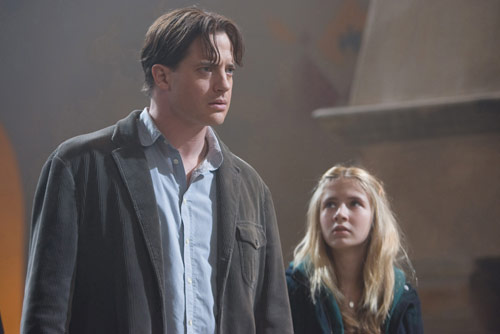
“Since the dawn of time, storytellers have enchanted,†a deep-voiced narrator tells us at the beginning. But rather than hearkening back to the dawn of time, Inkheart references The Wizard of Oz and especially Harry Potter. The Wizard of Oz references are explicit, as Brendan Fraser plays Silvertongue, a man who can make fictional characters appear in real life, just by reading a book. So he reads L. Frank Baum’s famous story, and a tornado and flying monkeys appear.

The problem is that Fraser’s “gift†also makes real people disappear into the book, which is what happened to his wife. So he, with a cutie tween daughter in tow (played by Eliza Hope Bennett), is searching for a copy of the novel that holds said wife imprisoned. But Fraser isn’t the only one looking for that book. Paul Bettany plays the morose Dustfinger, who was summoned by Fraser but desperately wants to get back into fiction-land so he can be reunited with his wife. And then there’s the villain Capricorn, who likes being in the real world and only wants to force Fraser to keep reading from various books, so as to get more wealth and power.
No one mentions Harry Potter in the film, but that was clearly on the minds of its producers and screenwriters. Inkheart tries to summon the magic and utterly fails. Part of the problem is that the movie feels cheap, with substandard special effects, chintzy production design, and lots of scenes where people just stand around and talk. Not that dialogue is necessarily bad, but it is when it’s merely a way to move the story forward without having to conjure up a new set.
Fraser is apparently the Hollywood go-to guy for acting in front of a green screen, and he’s fine here. Bettany is largely wasted, but he doesn’t embarrass himself. Ditto for Helen Mirren. And while I’m sure Miss Bennett looks smashing on the commercials that air on Nickelodeon, someone will have to explain why Brendan Fraser’s daughter speaks with a British accent. Suffice it to say, I was not enchanted.

I wrote this short column for Paste Magazine some time ago and then forgot about it for a while. It's about the unique and curious work of artist Stefana McClure, and I'm glad to see it resurface on the web. Ironically it was cut from the magazine in the great 21st century paper shortage with which we're now all familiar.

Director Steven Soderbergh has often alternated between big-budget Hollywood flicks (Out of Sight, Ocean’s 11) and smaller, indie fare (Schizopolis, Bubble). Che, his newest film, has elements of both. It has a big star in Benicio del Toro, a sexy topic in the life of Ernesto ‘Che’ Guevara, and an epic scope as Che helps to overthrow the Batista government of Cuba. But it’s also a small movie, as Soderbergh intentionally limits the film’s scale and focuses on the difficulties of creating a revolutionary movement.
This is particularly true in the movie’s second half, which skips ahead to 1966 when Che went to Bolivia in the hopes of replicating the success he had in Cuba. But as Soderbergh methodically shows, the circumstances were different in Bolivia. While the Cuban leftist political parties banded together with Castro and Che’s military movement, the communist party in Bolivia was skeptical and refused to lend support. While the Batista government was largely incompetent in how it ignored the revolution fomenting in the mountains, the Bolivian government, with the help of the CIA, didn’t make the same mistake. And while Che was able to work with a wide variety of charismatic leaders in Cuba, he was largely alone in Bolivia and was never able to create the momentum or sense of inevitability that occurred in the Cuban countryside.
I had a smile on my face the entire day yesterday. The entire day. I marveled at the sea of people on the Mall. Looking at the Lincoln Memorial, I pondered how far my country has come and how far it still has to go. I was filled with a strange joy watching Malia and Sasha and thinking how happy I’ll be to watch them grow up and smile over the next eight years. I chuckled at how the sight of Cheney in the wheelchair reminded me of Mr. Potter in It’s a Wonderful Life. That led me to think of the ways in which President Obama is strangely like George Bailey (stopping the run on the Savings & Loan, indeed). I smiled.
I was of course moved by Obama’s speech. Even if it wasn’t his finest, it was still a beautifully constructed, powerful statement of America’s democratic values and aspirations. I shouted “Amen†to the lines “We reject as false the choice between our safety and our ideals†and “Know that America is a friend of each nation and every man, woman and child who seeks a future of peace and dignity, and that we are ready to lead once more.†If nothing else, I felt inspired that my president is a man who can thoughtfully craft his own Inauguration speech and deliver it with such power. I kept smiling, and cried a bit, too.
Walking around Hyde Park, I tapped into the electricity that continues to buzz through my neighborhood even after our First Neighbors have departed for somewhat warmer climes. I sat down with two retired black women and talked about what this day meant to them. I thrilled at the sight of Barack and Michelle walking down Pennsylvania Avenue. I still can’t get over how much I love the sight of them together. I teared up as I listened to Jesse Jackson talk about the significance of this day. I even sat around and watched Obama and Joe Biden watch the parade. What does it say about me that I was watching someone else watch? It means I didn’t want the day to end. I was still smiling.
Of course, the day eventually passed. But I woke up this morning to look at photos, to relive the awesome and historically transformative occasion. I read newspaper accounts from around the world and reveled in how America’s status has been reborn. I pinched myself and called to mind that the long nightmare of the last eight years is finally over. That thought alone will have me smiling for weeks.
A friend from Egypt has been in town the last few days, and I was trying to explain how the economic events of the last several months have not only created a horribly difficult situation; they’ve caused a crisis of confidence, a fear that borders on despair. But yesterday, whether it’s rational or not, that mood of fear seemed to be swept away. I’m enough of a realist to know that one man can’t make that much of a difference, no matter how much power he has. And the difficulties confronting President Obama are so immense I’m not entirely confident he’ll succeed. But I can think of few people I would rather have sitting in the Oval Office. The fact that he’s there today has put another smile on my face.
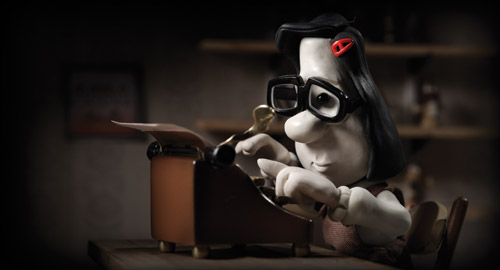
Sundance 2009 opened this evening with a claymation film for adults called Mary & Max, from the guy who made that Oscar-winning short Harvie Krumpet. Sorry to make another pointer post, but for the next week I'll be blogging about Sundance over at Paste.
On one of our podcasts from last year we talked about how odd Hellboy II is, that it seems like the sort of thing made for young people or kids, but it has language and violence that you normally wouldn't put in a children's film. I'm not sure who it's for, exactly, and I feel the same about Mary & Max. Cute, sentimental claymation that touches on suicide, Asperger's syndrome, sexuality, depression, pharmaceuticals, drunkenness, etc. An odd mix. More at the Paste blog.
For more immediate and ill-considered reactions to films, watch the Daily Plastic sidebar or join us at Twitter.
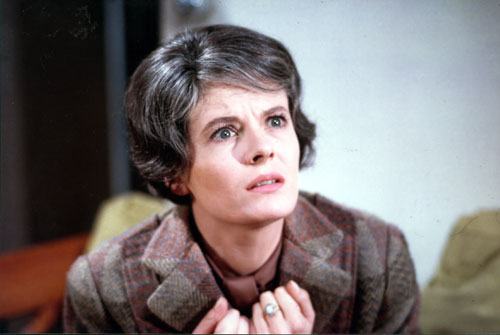
Bay Area film writer Brian Darr polls his fellow San Francisco cinephiles at the end of every year to gather a list of favorite repertory or revival screenings, and reading the entries is always a testament to how much film is available to see outside the house. It's also fun to participate, since it means looking over all the year's screenings that weren't eligible for any sort of awards, even though they're often the highlights of the year. As Brian says, "No two eyes can witness all the splendid film presentations that occur in a year here," and "[c]ollectively, these fifteen lists might provide a reasonably accurate view of the range and depth of cinematic experiences to be had for a Frisco Bay rep-head in 2008."
Here's my entry, and from there you can find the others.
I was extra lucky to participate this year since I was only in San Francisco through May. Still, it was hard to whittle my list to ten. As J. Robert Parks has shown, the offerings in Chicago are rich as well, and one of my resolutions is to take better advantage of them this year.
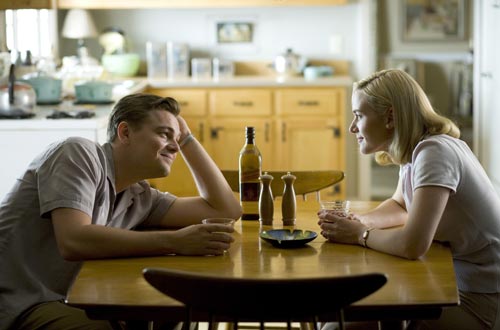
Much has been made of the fact that Revolutionary Road reunites Kate Winslet and Leonardo DiCaprio for the first time since they swept us off our feet in Titanic. But if elegant romance is what you’re looking for here, you’ve come to the wrong time period. Even Rose and Jack’s passion couldn’t have survived the ‘50s.
At least that’s the message most audiences will take away from this bleak drama. The movie is based on Richard Yates’s 1961 novel, one of the first to pinpoint the despair behind the happy picket fences of suburbia. Unfortunately, that theme has been beaten to death in the last 40 years, so one more tale of people in gray flannel suits and pretty cotton dresses suffering quiet desperation feels dated, if not irrelevant.
Fortunately, if the story needs to be retold (and maybe, with all the politicians pining for the values of the ‘50s, it does), it could do far worse than a production of this caliber. Kate Winslet gives a brilliant performance as the wife who convinces her husband to drop everything, move to Paris, and escape “the hopeless emptiness of the whole life here.†Leo doesn’t quite have the gravitas to match his on-screen wife, but he powerfully conveys what happens when a man looks around and realizes his dreams have no hope of coming true. Michael Shannon is great as a mentally unstable young man who still perceives more than anyone around him, though that character was a cliche the moment Yates wrote him. Best of all, though, is Kathy Bates as a nosy neighbor. The inflection she gives to a simple “Yoo Hoo†says more about stifling suburbia than any dialogue ever could.
Even better than the acting, however, is the film’s production design and art direction (courtesy of Kristi Zea, Teresa Carriker-Thayer, John Kasarda, and Nicholas Lundy). Their use of browns and beiges, grays and blues is both gorgeous and thematically potent. The relatively open vistas of the husband’s office contrast sharply with the divided rooms of the couple’s house. And Roger Deakins, one of contemporary film’s finest cinematographers, complements it all with gorgeous long shots and perfect camera placement. If you want to remind yourself that suburbia is America’s hell and conformity its defining characteristic, then this is the movie for you.
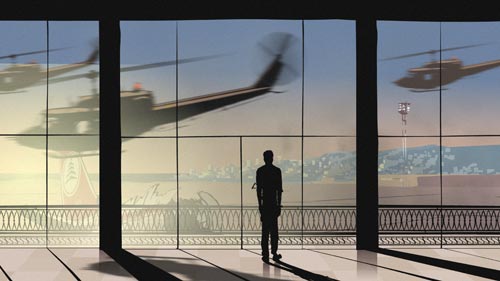
As Israel again goes to war against one of its neighbors, hoping to create a sense of security for itself, Ari Folman’s anti-war animated feature Waltz with Bashir couldn’t be more timely. It focuses on one of Israel’s first “defensive invasionsâ€--when it entered Lebanon in 1982 with the hope of rooting out the PLO. That invasion “ended†with Israel occupying a swath of southern Lebanon for two decades.
The stench of war, however, was particularly foul, as hundreds of Palestinians were massacred in the Sabra and Shatila camps by members of the Lebanese Phalangist party while Israeli soldiers stood outside. Whether the Israeli army was complicit in the killings has always been disputed. Israeli soldiers were surrounding the camps, but it’s unclear how much they realized of what was going on, though later an Israeli government commission found General (later Prime Minister) Ariel Sharon “personally responsible.â€
Folman was an Israeli soldier and part of the ground forces during that invasion, and yet he recalls little of what happened, except for a strange dream he keeps having, rendered in gorgeous yellow-hued animation in the movie. Wondering why he can’t remember, he approaches his psychiatrist, who encourages him to explore his dreams and memories by interviewing fellow soldiers who might’ve been there with him. Those conversations were originally shot on film and then animated by Yani Goodman. These are intercut with scenes that Folman does remember of his time in Lebanon, including various battles and, in a moment that consciously evokes Apocalypse Now (the mother of all Jungian war films), surfing.
The focus on dreams and memories, repressed and remembered, is incredibly provocative, and the simple but effective animation works far better than live action photography could. The animation dovetails particularly well with the Jungian/Freudian imagery on display, giving the entire film an archetypal quality. That threatens to minimize the horrors of war, but Folman always knows when to pull back, when to allow the details of an interview to ground the material. Only an unnecessary porn-tape interlude breaks the spell. The film’s soundtrack, however, is particularly effective, both in its use of effects and music. The musical choices complement the material at times but also cut across it at others, creating a stimulating sense of discontinuity that meshes with the overall themes.
While the movie uses the memories of Folman and his fellow soldiers as the template, the idea of cultural memory is clearly what’s in view. Waltz with Bashir asks how we can forget the past--this in a world in which “Never Forget†is a powerful rallying cry--and continually repeat the same mistakes. Those come into shocking view in the film’s final, powerful moments. This is a must-see film, especially now.
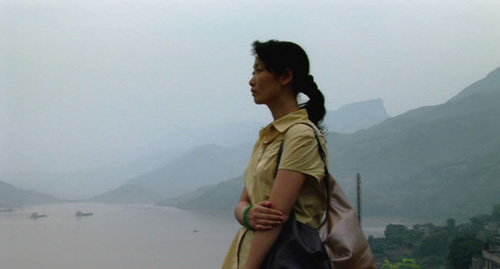
Many critics have remarked that 2008 wasn’t the best year for movies. I wouldn’t necessarily disagree, but I think it’s important to qualify the point. It was actually a strong year for strong films, but it was a weak year for great ones. I probably saw just as many movies this year that I could recommend, but I’ve struggled to fill out my Top 10. So instead of being bound by the round number of ten, I’ve decided to offer my Top 9 of 2008 and then list a whole bunch of other movies that could have easily been #10 but wouldn’t have come close to cracking the list in previous years. Am I cheating? How can I be when I’m the one keeping score?
A few general notes before I dive into the list. For consistency’s sake, I’m going by the policy of choosing films that played at least a week in New York. That’s the approach that most critics use, and it’s as good as any. Not that this makes everything clear. For example, many critics are including 4 Months, 3 Weeks, and 2 Days on their 2008 list, while I had that as my #1 film of 2007. No, I’m not going to include it again, though the stats fiends may care to note it would be the #2 film of 2008 if I did. Similarly, it’s unclear whether Carlos Reygadas’s masterpiece Silent Light qualifies as a 2008 release. It played for a week at MOMA in New York, but it’s getting a traditional theatrical release in early ’09 and will hopefully make its way around the country. For reasons I won’t try to explain, I’ll leave it for ’09.